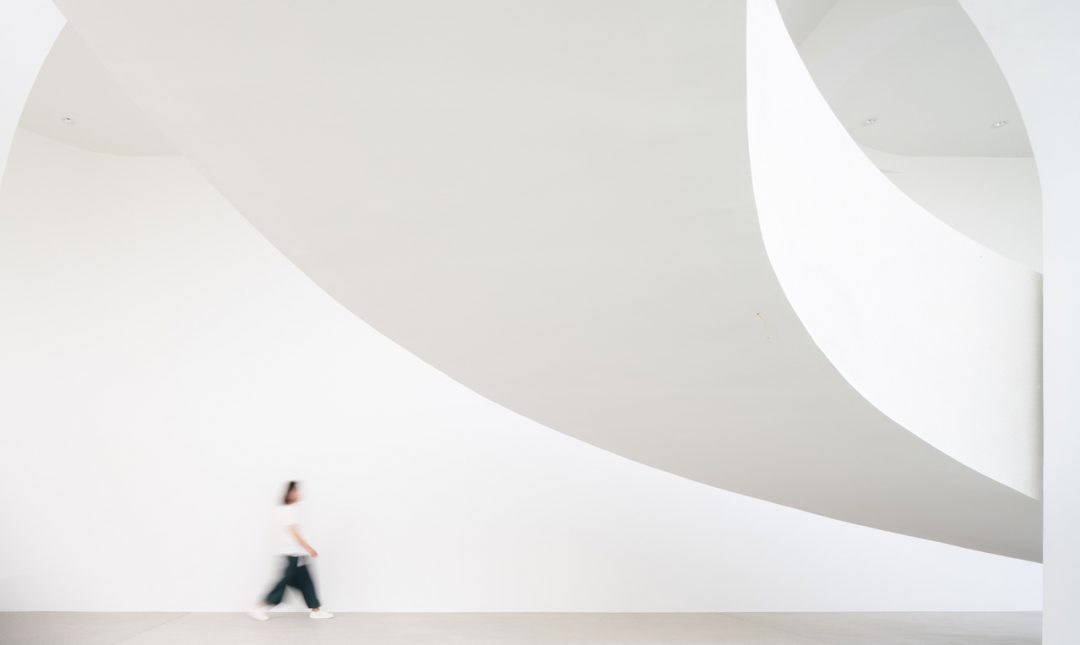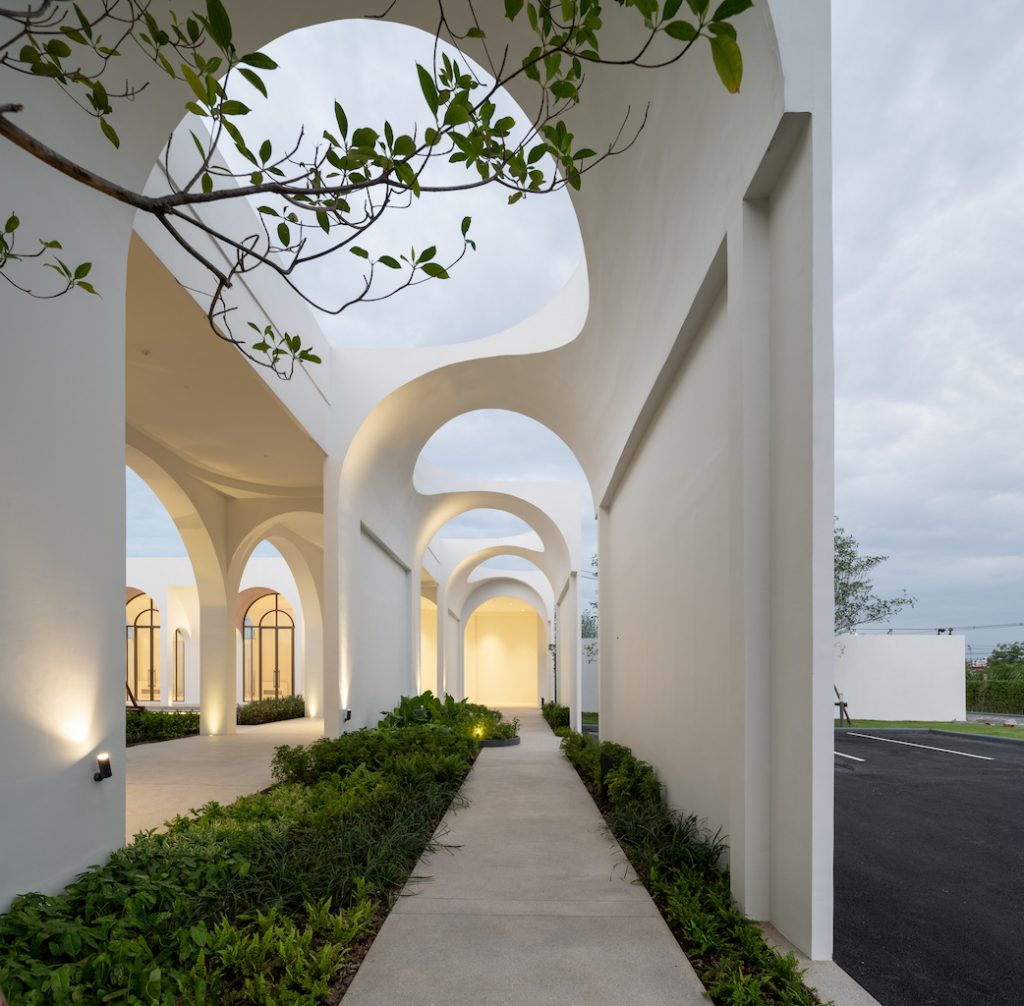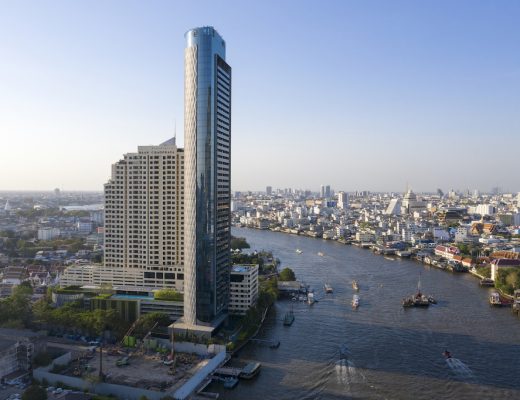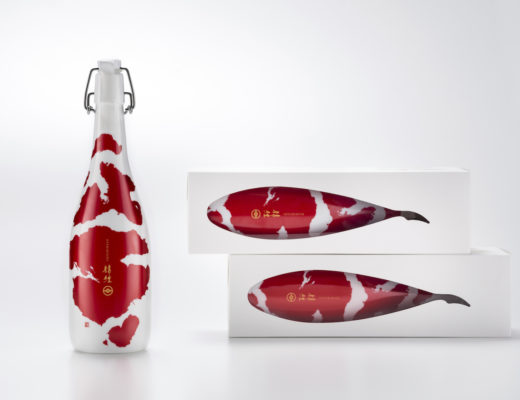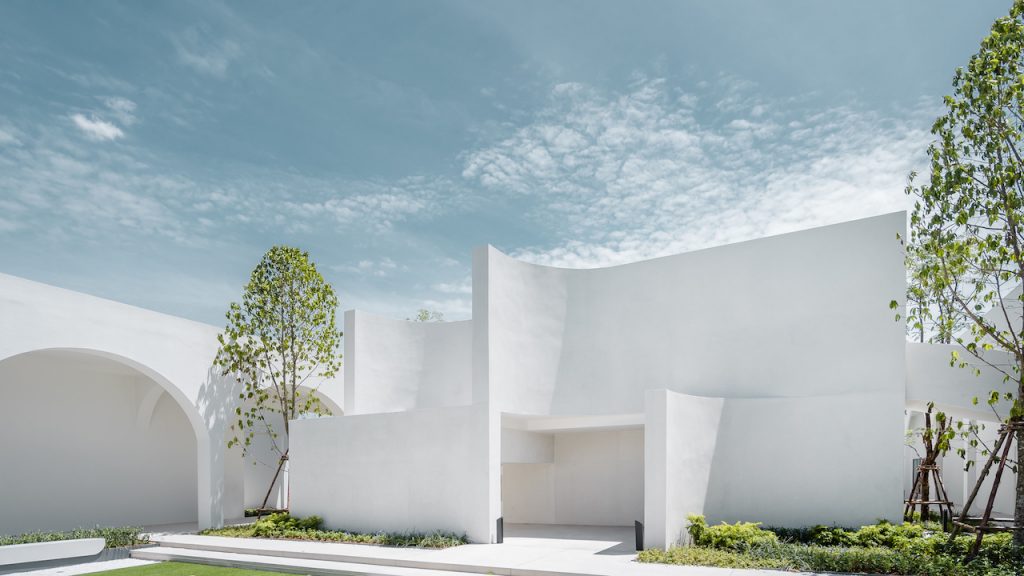

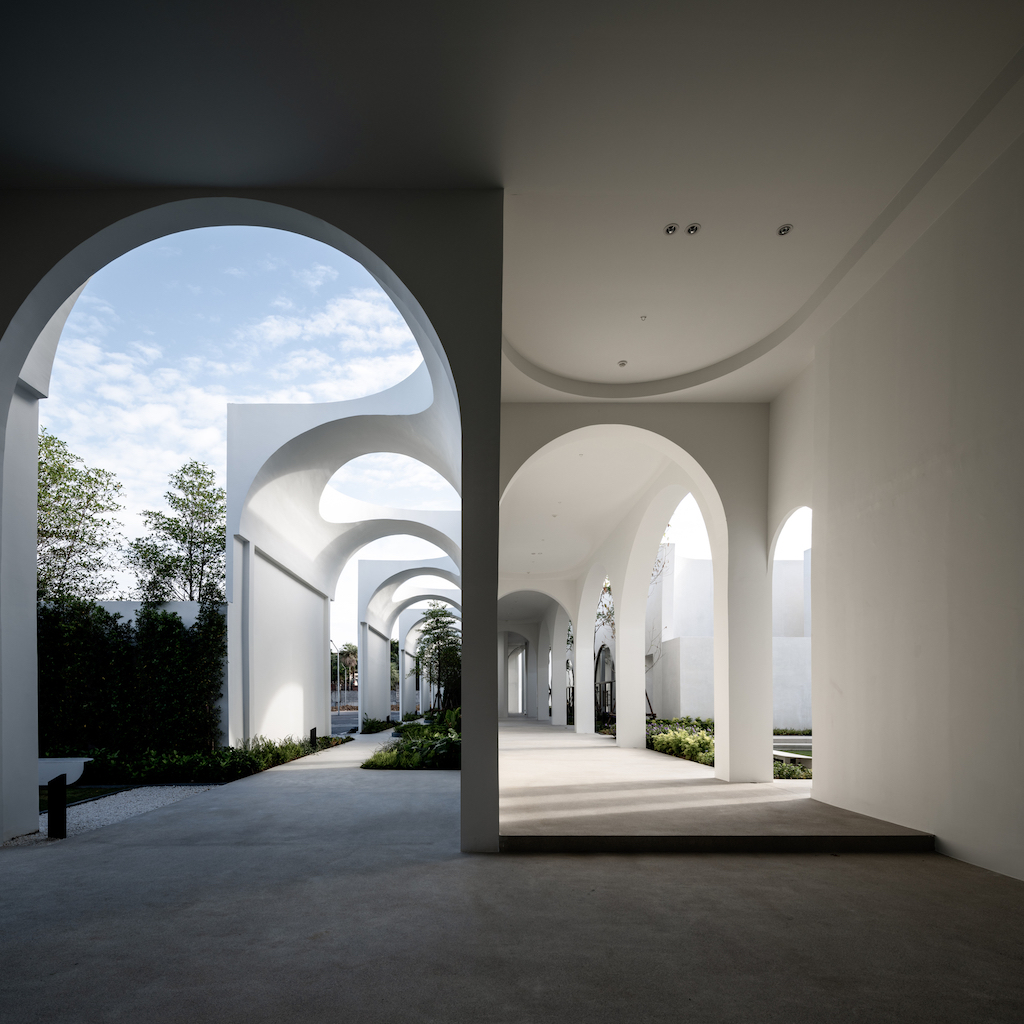
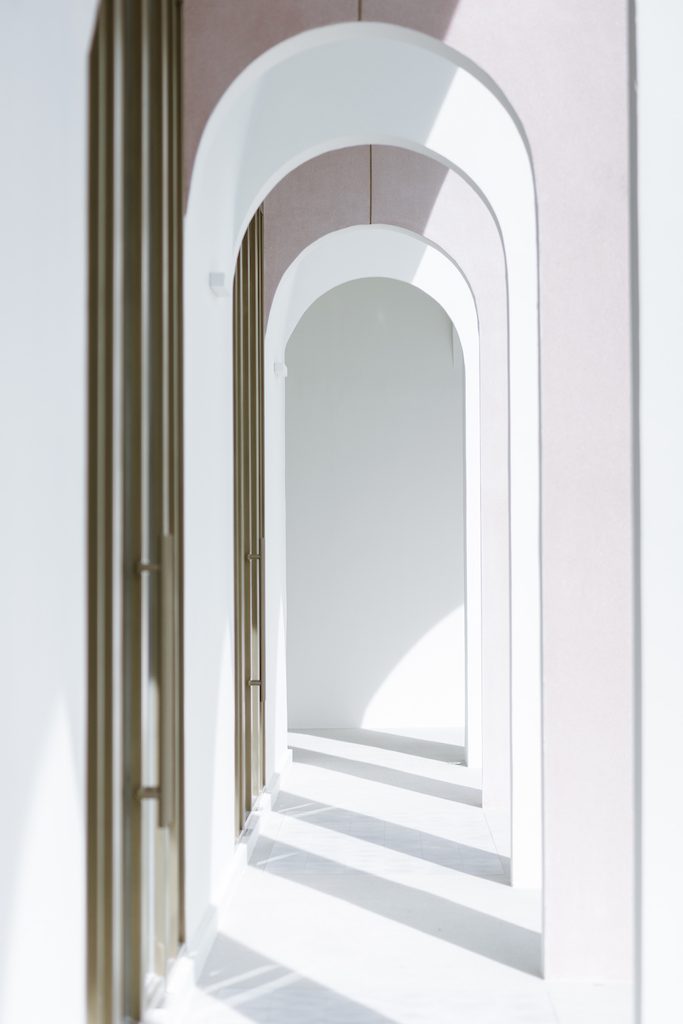
The theme of the arch and the curved wall is repeated inside the building in various forms, including the sculptural staircase in the courtyard, from where the bride throws her bouquet. The arches forming both the exterior wall of the main hall and the cloistered structure overlap each other, again creating a feeling of movement. 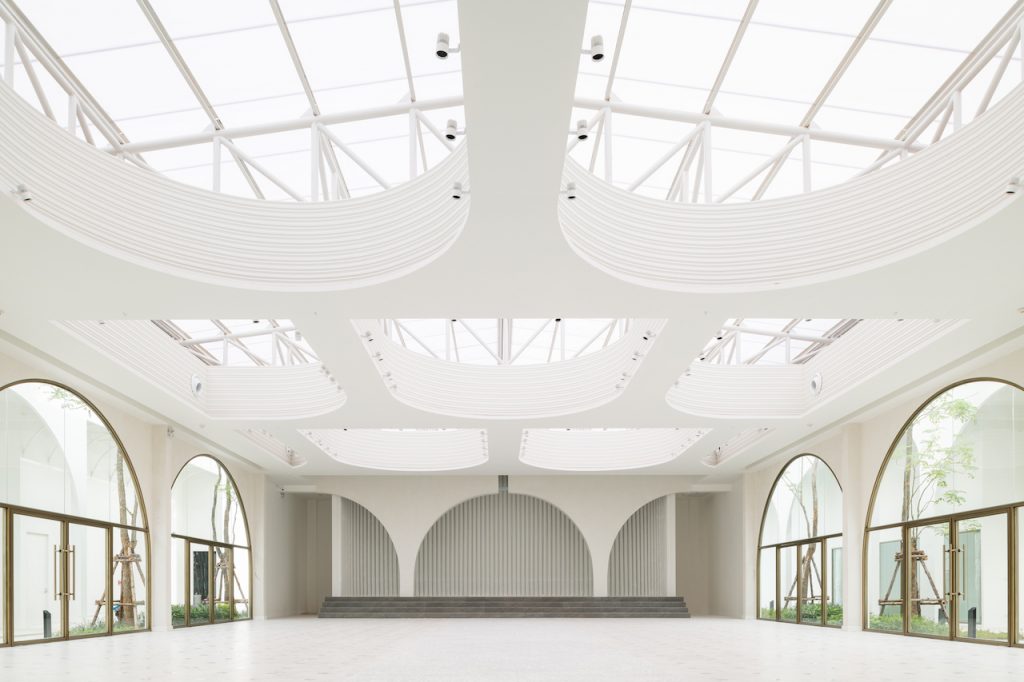
The curves are scaled down in the cornice of the arch-shaped skylights in the ceiling of the main hall and this cornicing element is re-appropriated as the finish to the wall behind the stage. Curved walls and cut-outs, along with soft curtains, create a memorable and contemporary space, which is indicated in the building’s name, Aube, meaning “hug”. 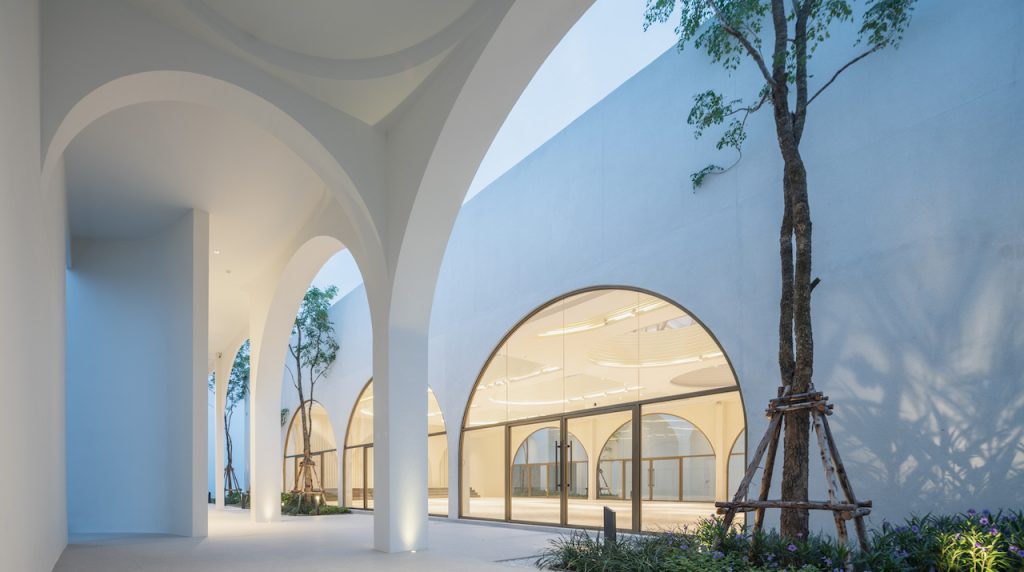
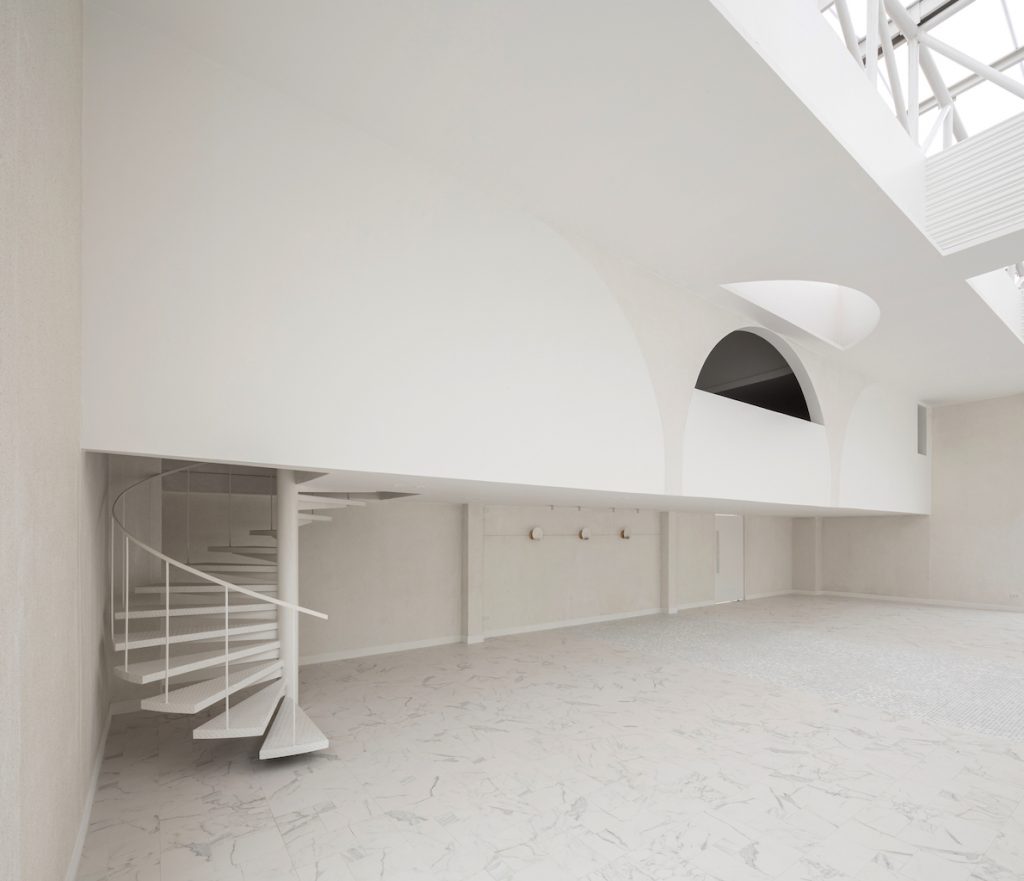
The main hall holds 290 people and sits free-standing in a courtyard surrounded on three sides by a U-shaped cloistered structure which allows for under-cover circulation and the inclusion of auxiliary rooms. The engagement hall holds 150 people and is separated from the main hall by the “bouquet throwing” courtyard. 
The Khan Maak walkway and cloistered courtyard could have simply been a copy of an arched walkway, or a reinterpretation of a church element. However, arches are deconstructed to half-arch modular elements and reformed after rotating on different axes, clearly giving the building a modern image, open to interpretation. The effect is a snaking ceiling of white concrete. 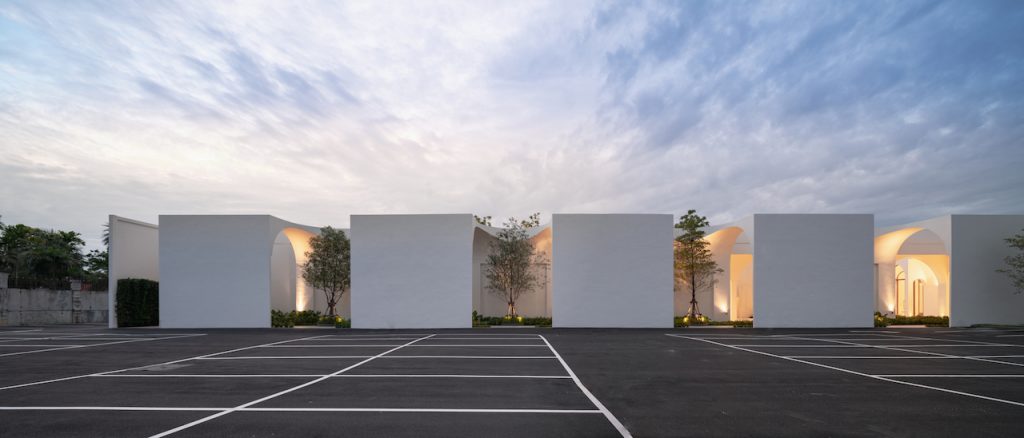 In terms of construction elements, the Khan Maak walkway utilises expanded polystyrene foam carving and plaster to form the white curvy continuous shape, while elsewhere the sculptural look is achieved using white sand-wash finished concrete.
In terms of construction elements, the Khan Maak walkway utilises expanded polystyrene foam carving and plaster to form the white curvy continuous shape, while elsewhere the sculptural look is achieved using white sand-wash finished concrete.
Photos: Beer Singnoi / Ketsiree Wongwan

